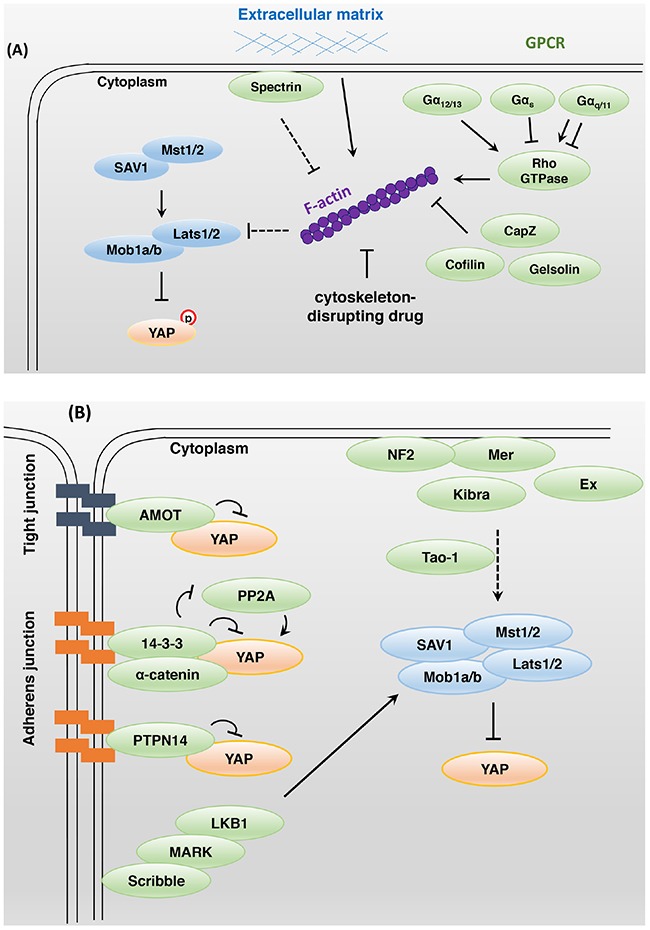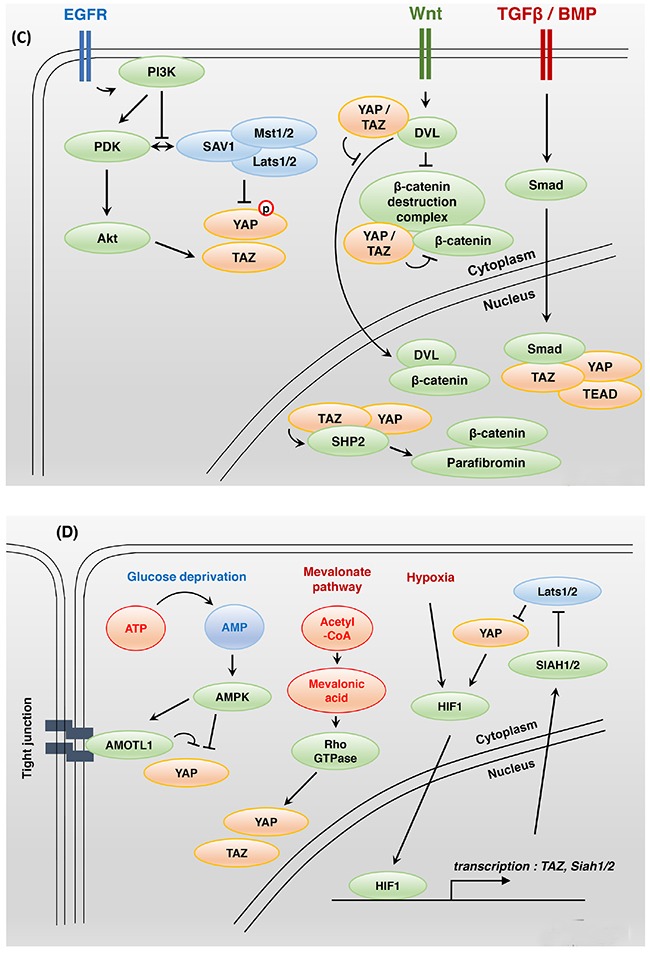Figure 2. Bi-directional interactions between Hippo and other signaling pathways.


A. Modulation of the actin cytoskeleton affects YAP activity. Extracellular matrix stiffness, cell geometry, cell-cell contacts, and F-actin-modulated proteins regulate YAP and TAZ activity. Rho family small GTPases play a key role in actin cytoskeleton organization. LPA- and S1P-activated Gα12/13-protein-coupled receptors inhibit Lats1/2 kinase activity, whereas glucagon- and epinephrine-activated Gαs-protein-coupled receptors stimulate Lats1/2 kinase activity. Gαq/11 protein can either activate or inhibit YAP activity. B. In mammals, apical domain protein NF2 and Kibra act as upstream regulators of Hippo core components. To activate the Hippo signaling pathway, NF2 and Kibra may require Tao-1 kinase activity. The junctional proteins AMOT, 14-3-3, and PTPN14 interact with YAP directly and inhibit its activity. The basolateral domain protein Scribble acts downstream of the tumor suppressor LKB1 and MARK to regulate the Hippo signaling pathway. C. PDK1 associates with Mst and Lats kinase through Sav, and these complexes induce YAP-S127 phosphorylation. Epidermal growth factor-mediated PI3K activation triggers the dissociation of PDK1 and Hippo core components that fail to promote YAP phosphorylation. Nuclear YAP and TAZ promote SHP2-dependent dephosphorylation of parafibromin. The phosphorylated parafibromin interacts with β-catenin and activates Wnt target gene transcription. However, cytoplasmic YAP and TAZ inhibit the nuclear accumulation of β-catenin as integral components of the Wnt signaling pathway. TAZ, YAP, SMAD2/3, and TEAD physically interact in the nucleus and share a transcriptional program. D. Glucose deprivation leads to AMOTL1 phosphorylation by AMPK. Phosphorylated AMOTL1 is more stabilized and promotes YAP-S127 phosphorylation and nuclear exclusion. AMPK also inhibits the transcriptional activity of YAP through direct phosphorylation. The mevalonate pathway can promote Rho GTPase activity through geranylgeranylation, thus enhancing YAP and TAZ activity. Under hypoxic conditions, a positive feedback loop may be established to enhance HIF1, YAP, and TAZ activity.
